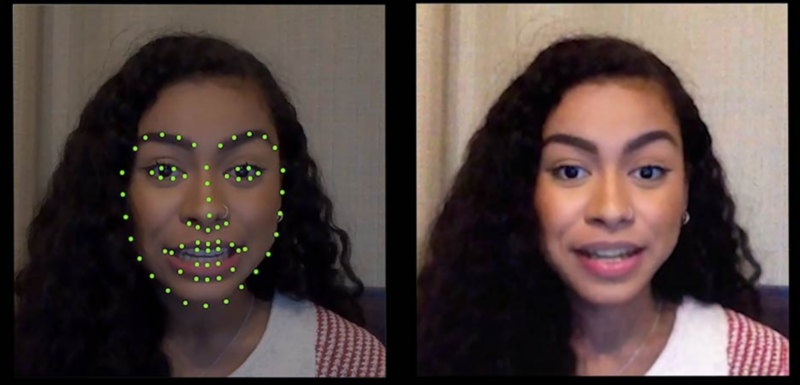Nvidia developed a radically different way to compress video calls

Enlarge / Instead of transmitting an image for every frame, Maxine sends keypoint data that allows the receiving computer to re-create the face using a neural network. (credit: Nvidia)
Last month, Nvidia announced a new platform called Maxine that uses AI to enhance the performance and functionality of video conferencing software. The software uses a neural network to create a compact representation of a person's face. This compact representation can then be sent across the network, where a second neural network reconstructs the original image—possibly with helpful modifications.
Nvidia says that its technique can reduce the bandwidth needs of video conferencing software by a factor of 10 compared to conventional compression techniques. It can also change how a person's face is displayed. For example, if someone appears to be facing off-center due to the position of her camera, the software can rotate her face to look straight instead. Software can also replace someone's real face with an animated avatar.
Maxine is a software development kit, not a consumer product. Nvidia is hoping third-party software developers will use Maxine to improve their own video conferencing software. And the software comes with an important limitation: the device receiving a video stream needs an Nvidia GPU with tensor core technology. To support devices without an appropriate graphics card, Nvidia recommends that video frames be generated in the cloud—an approach that may or may not work well in practice.
Read 27 remaining paragraphs | Comments
from Tech – Ars Technica https://ift.tt/331SZWW
Comments
Post a Comment